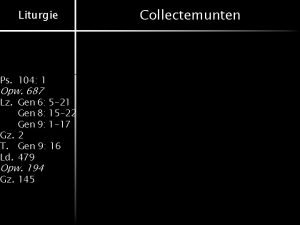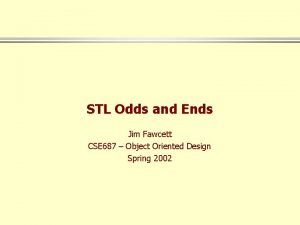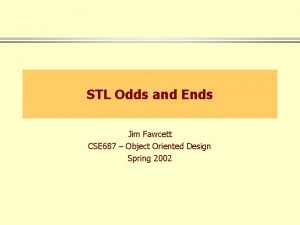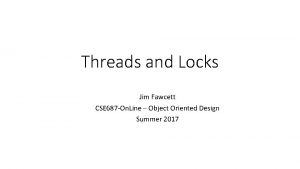STL Odds and Ends Jim Fawcett CSE 687





- Slides: 5

STL Odds and Ends Jim Fawcett CSE 687 – Object Oriented Design Spring 2002

Removing Element Values · To remove all values, t, from a vector, v, use: v. erase(remove(v. begin(), v. end(), t), v. end()); · To remove all values, t, from a list, l, use: l. remove(t); · // note: this remove is a member function To remove all values, t, from an associative container, c, use: c. erase(t); // remove corrupts an associative container

Finding and Counting Values What do you want to know? Algorithm to Use Member function to use Unsorted range Set or map Multiset or multimap Does the desired value exist? find binary_search count find Does the desired value exist? If so, where is the first object with that value? find equal_range find or lower_bound Where is the first object with a value not preceding the desired value? find_if lower_bound Where is the first object with a value succeeding the desired value? find_if upper_bound How many objects have the desired value? count equal_range count find (iteratively) equal_range Where all the objects with the desired value? Effective STL, Scott Meyers, Addison Wesley, 2001

Functor Notes • STL Algorithms pass functors by value, so all your functor designs should properly support copying and assignment, perhaps by simply allowing compiler to generate those operations. • Predicate functors should be pure functions, e. g. , they always return a boolean result as a function of their argument(s) only, e. g. , internal state plays no role in determining the return value. The usual way to do this is simply to avoid giving predicate functors any state or declare them const.

Code Examples • Inserter – demonstrates use of transform algorithm using an inserter iterator. • Sorting – demonstrates use of sort, find_if, upper_bound, and lower_bound









